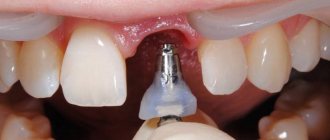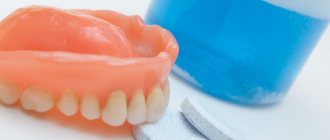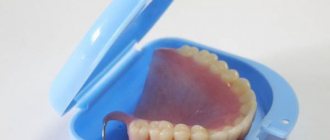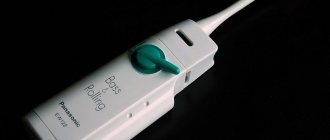Dental handpieces from time immemorial
The history of the development of dental handpieces as an independent tool designed to convert the energy of a compressed air flow, rotation of a micromotor or electric current into the movement of a dynamic working tool fixed in the handpiece began in ancient times with a primitive bur, which was driven by a rope-arc stretcher.
In subsequent centuries, doctors attempted to create a tool suitable for preparing teeth, but lack of knowledge and the low level of technical progress did not give them a chance. And only in the middle of the 14th century did things get off the ground...
Brief Definition
The turbine tip has a turbine in the housing. The principle of its operation is based on the pressure of compressed air, with the help of which the air rotor and the collet that secures the bur rotate. The air is converted into kinetic energy - the tool is launched.
Turbine tips are used by dental therapists when preparing the hardest tissue of the human body - tooth enamel. Gradually, the products began to be used in surgery and orthopedics: specialists appreciated their uniqueness.
Reference!
After each patient, sterilization of the tips with water vapor at a temperature of +135° C is required. The instrument is sterilized only with distilled water.
How it was in the 19th century
The prototype of a dental handpiece with a fixed steel bur can be considered the first automatic drill, powered by a spring mechanism that wound up for two minutes. This invention, made in 1864, belongs to the English doctor George Fallows Harrington. The bur speed reached 100 revolutions per minute, but the design was extremely inconvenient for the doctor. In the early 70s of the 19th century, American dentist James Morrison patented a drill with a foot pedal drive, where a sleeve with a tip was put directly on the output shaft and the torque reached 2000 rpm. It was this design that not only marked a revolutionary breakthrough in the development of dental equipment, but was also actively used in medical institutions in developed countries until the first quarter of the 20th century.
Russia, XX century
In Russia in the 30s of the 20th century, with the active development of dentistry as a practical discipline, industry began to produce several types of dental machines in which the dental handpiece was already a separate part and performed the same functions as the most modern handpieces. Only the speeds are incomparable: straight and contra-angle handpieces of those years had speeds from 3,000 to 30,000 per minute, the turbine handpiece invented in 1957 reached 45,000 rpm and was in great short supply, and the modern turbine handpiece reaches 500,000 rpm.
Straight and contra-angle handpieces
Straight handpieces are low speed. A conventional handpiece paired with a micromotor provides bur rotation speeds from 1000 to 30,000 rpm. Due to certain design features, they are most often used in surgical and orthopedic practice, as they allow significant pressure to be applied to the cutting tool without vibration. For comparison: the standard pressure on dentin for a steel bur at a rotation speed of 18,000 rpm is 500 grams, and for a tungsten carbide bur at 450,000 rpm is 2 grams. . Dental technicians also work with them in the manufacture and fitting of dentures, implants and other orthodontic structures.
Contra-angle handpieces are also low-speed and have a wide range of bur rotation speeds, making them a versatile tool. Contra-angle handpieces are used by dentists of all specialties. Its shape is convenient for working in hard-to-reach areas of the oral cavity, it can withstand significant lateral loads without vibration and easily works with various cutting tools. The following types of contra-angle tips are distinguished:
- Standard contra-angle handpiece with 1:1 gear ratio and bur rotation speed of 1,000 - 40,000 rpm. (blue markings).
- The overdrive contra-angle with gear ratios from 1:2 to 1:10 reaches speeds of 5,000 - 230,000 rpm. (red marking).
- Reducing tips have reduction ratios from 4:1 to 20:1 and speeds from 2,000 to 10,000 rpm. (green marking)
Straight and contra-angle handpieces from all manufacturers have a standard micromotor mounting (ISO 9001). According to the cooling system, tips are distinguished:
- No cooling. They are used extremely rarely and only for low speeds due to the risk of overheating and damage to enamel and dentin.
With external cooling. Used mainly in dental surgery.
With internal cooling. Used with air and electric micromotors and is the most common and effective type of cooling.
The backlight can be implemented through fiber optics or a built-in LED and light generator.
Dental handpieces and their types
Dental handpieces
- instruments without which no type of dental treatment is unthinkable today. It is the dental handpiece, thanks to the rotation of the micromotor, that converts the flow of compressed air into energy and sets in motion the bur, endodontic file, scaler and other working instruments used by the doctor.
Today, the variety of dental handpieces is quite large. These are turbine, mechanical, straight and angular handpieces, special - surgical, periodontal, endodontic, as well as handpieces for physiodispensers.
Each type has its own characteristics and advantages. First, let's talk about turbine tips.
Turbine tips
- these are the tips in the housing of which the turbine is located. The rotor is driven (rotating) by compressing air. It rotates the tool, fixed in the tip using a collet device, which begins to work after pressing a button or using a key.
There are turbine tips without optics, with a light generator and fiber optics. The most popular today are tips produced by brands such as NSK, W&H and Bien-Air.
It should be remembered that all turbine handpieces require certain care: disinfection after each patient, regular lubrication (at least 2 times a day), which will certainly increase the service life of the instrument.
In order for the turbine tip to meet all expectations, you should take into account the fact that you can screw it directly onto the hose mouthpiece, and also use a quick-release adapter to which the tip is attached with a snap. This feature requires familiarization with five standards for handpiece-hose connections.
The most common and quite popular connections include: 2-channel Borden, 4-channel Midwest (without backlight) and 6-channel Midwest LUX with fiber optics. As a general rule, quick release adapters and lugs should be the same brand.
In addition, you should know that turbine head heads are divided into three sizes:
- standard head (std) – thanks to it, therapeutic treatment is carried out;
- small head (mini) – intended for miniature work and treatment of children. During these works, strong pressure on the drill and high power are not required;
- large head (midi) - used in orthopedic treatment, therefore it can withstand heavy loads and has strong, reliable bearings.
When working with turbine handpieces, the working area is illuminated in the same way as when working with direct handpieces - due to fiber optics or a built-in lighting system, LED and generator.
If we talk about the terminal clamp, it is most often push-button, and only inexpensive models have a latch or key.
This division also depends on the type of bearings. If the bearings are ceramic, the ends will cost more and last longer. Metal ones are correspondingly cheaper and not as durable, but their service life will largely depend on care.
Since turbine handpieces operate at high bur rotation speeds - 150,000 - 500,000 rpm, great attention is paid to cooling dental tissues when using them. That is why all turbine tips are equipped with an internal cooling system - a water-air spray. The only difference between the expensive and economy models is that the latter are equipped with a single-point spray, the slightly higher level - a three-point spray, and the expensive ones - a five-point spray.
So, to summarize all of the above, when choosing a turbine tip, we recommend paying attention
for the following instrument characteristics:
- hose connections (Borden, Midwest, Midwest LUX, Siemens),
- the presence or absence of a quick-release adapter,
- head sizes (std, mini, midi),
- type of bur clamp (button, latch, key),
- lighting (fiber optics, built-in light generator),
- cooling (one-, three- or five-point spray),
- types of bearings (ceramic, metal).
Another type of dental handpiece is contra-angle handpiece
– used in surgery, implantology, orthodontics, endodontics. They can be installed on a micromotor, some are equipped with their own light generator and fiber optics. Contra-angle heads come in a variety of sizes, from miniature ones designed for endodontics to large ones used in orthodontic practice. Internal and external cooling, and in some models its absence at all, also indicates the various purposes and tasks of using this tool.
Types of contra-angle handpieces
Angular dental handpieces, also known as mechanical ones, are driven by an electric motor or a pneumatic motor. In appearance, they are very similar to turbine engines, but differ significantly from them in the rotation speed, which is lower than that of turbine engines - from 20,000 to 70,000 rpm. That is why contra-angle handpieces are often called low-speed, or micromotor.
Contra-angle handpieces are divided into the following groups:
- reduction tips (marked with a green stripe) have a reduction number from 4:1 to 20:1;
- increasing angle tips (marked with a red stripe) with gear ratios from 1:2 to 1:10;
- standard - (marked with a blue stripe) - with a gear ratio of 1:1.
The contra-angle handpiece is available with an internal cooling system, since the output rotation speed (when using an electric motor) can reach 200,000 rpm.
The working head of the lowering endodontic handpiece is fixed with a button. This handpiece is not cooled and can be used with both hand and machine endodontic instruments.
Low-speed dental handpieces are used to prepare the contact surfaces of teeth, prepare tooth cavities for the purpose of installing dental inlays, half-crowns and opening the root canals of the lower teeth. Micromotor handpieces are highly efficient and easy to use.
Dental handpieces from NSK and W&H are particularly popular today. The price/quality ratio is a guarantee of comfortable and successful work for everyone who chooses the No. 1 brands. Thanks to high-precision technologies and in-house developments, tips for NSK and W&H physiodispensers are successfully used in the treatment of even the most complex clinical cases. All lines of NSK and W&H handpieces are designed with the requirements of professionals in mind, therefore they are ultra-reliable, convenient and efficient in use.
Straight mechanical tips
Straight mechanical dental handpieces have the same success in modern dentistry as angled ones. They differ only in that they are driven by an electric motor or a pneumatic motor and, due to their design features, allow great forces to be exerted on the cutting tool. As for the speed indicators, they do not differ from the indicators of the contra-angle tips.
Differences between tips based on cooling system
According to the cooling system, the tips differ as follows:
- without cooling,
- with external cooling,
- with internal cooling.
Non-cooled dental handpieces are used with air motors. Tips with external cooling are used less frequently, acting as a transition link in the cooling device, while internal cooling is inherent in all modern air and electric motors. The main condition is the coincidence of the cooling system of the motor and the handpiece, be it angular or straight.
What should you pay attention to when purchasing mechanical handpieces?
When you buy mechanical handpieces, pay special attention to the following characteristics:
- gear ratio (direct, high, low),
- cooling system (without cooling, external, internal),
- lighting system (fiber optics, built-in LED with generator),
- type of micromotor (electric, air).
The so-called special tips - endodontic, surgical -
including for physiodispenser), as well as
scalers
- tips for removing dental plaque.
These instruments guarantee flawless work for the doctor and a comfortable feeling for the patient. Of particular note are NSK endodontic tips, which, due to the fact that they are produced taking into account the most modern innovative developments, represent the best line today! Surgical handpieces from NSK, W&H and SOHO are also in the lead! Ergonomics, reliability and durability are the main advantages of tools for true professionals.
Tips for physiodispensers are most often sold as a set. For example, the angled micromotor handpiece Saeshin STRONG ACL(B) is designed for the Saeshin physiodispenser, the same applies to other series of handpieces. This factor greatly simplifies the procedure for purchasing instruments, and most importantly, guarantees 100% quality of dental treatment.
The list of the above brands also includes Bien-Air dental handpieces. Swiss quality, affordable price, high technology, ergonomics, innovative lighting - all these advantages are absolutely necessary for dental implantation and other dental operations. The excellence of Bien-Air dental handpieces is recognized throughout the world!
You can always buy dental handpieces from leading brands - NSK, W&H, SOHO, Mercury, Bien-Air - in Moscow at affordable prices in the Dental Market online store. All spare parts for handpieces are also presented here, which greatly simplifies the procedure for purchasing the necessary goods. If you have any questions, our managers will answer them and help you make the right choice.
In addition, the Dental Market online store constantly offers discounts and promotions, especially for regular customers.
Favorable prices for high-quality dental equipment at Dental Market are waiting for you!
Turbine tips
In clinical practice, turbine handpieces are most often used by dental therapists. Turbine tips differ significantly from angled and straight tips in their technical characteristics. There are two main factors:
- High bur rotation speed, which is 150,000 - 500,000 rpm.
- Low mechanical power, due to which increased force on the tip leads to a decrease in the speed of the bur and its possible stop, as well as to rapid wear of the rotor group.
Working with a turbine handpiece requires a certain skill and constant control of the pressing force, since excessive or insufficient force on the drill reduces the efficiency of cutting hard tissue.
Which tip to choose - turbine or booster?
The boost tip is much better than the regular turbine tip. At least, this is what many dentists think, which means it’s worth understanding what exactly the difference is. In this article I share my experience, which may be useful to beginners.
Benefits of a booster tip
The boosting tip has a socket for a conventional micromotor, which is connected to the installation specifically to the hose of the air micromotor. But if you want to evaluate the full functionality of this tip, then you need to connect it to an electric motor with a water supply. If you connect it to a pneumatic micromotor, then the full potential of this handpiece will not be revealed.
The handpiece increases the speed of the micromotor by 5 times. The average speed of the micromotor is about 40 thousand revolutions per minute, that is, when operating this handpiece we get about 200 thousand revolutions.
Another advantage of this variety is that it has very high torque. With this tip there are no difficulties when preparing enamel, dentin and filling materials. The tip does not lock, and the tooth does not heat up as a result, which is comfortable for both the patient and the doctor.
Features of the turbine tip
Dentists usually become familiar with the turbine handpiece while still in college. It connects to the hose of the pneumatic installation; it can be two-channel or four-channel. Water passes into one channel and air into the other. Air-water cooling occurs. The huge disadvantage of this tip is that it has low torque. The bur is driven by compressed air, which passes inside this tip and begins to rotate the turbine blade. The rotation speed will depend on the pressure of the compressed air that enters the hose of the pneumatic installation.
The rotation speed of a turbine handpiece bur can be higher than that of a booster bur, reaching 300 thousand revolutions per minute, but this is not an indicator of its effectiveness. The most important criterion is torque, and the booster tip has much higher torque.
Comparison in practice
You can easily recognize the booster tip by its red ring. There are no markings on the turbine engine. The booster tip is much smaller in size, but heavier than the turbine tip. But this is rather an advantage: movements with this tip are smoother and more coordinated than with a turbine one. With it, you can better feel the hand and the pressure of the bur on the hard tissues of the tooth, which adds comfort. The fixation of the bur is the same for the two types of tips.
In my practice, I often use enhancement tips, one of them is the Dentsply Sirona T3 Line, the most budget-friendly enhancement tip you can find. There is no backlight on it, only air-water cooling. I also have another NSK S-Max M95L booster tip, already with light.
I also have a turbine from NSK Pana-Max, perhaps the most budget turbine that exists. I use it for rough preparations and small touches, for example, when grinding fillings. But mostly I work with the booster tip: it is attached via a connector to the micromotor, easily removed and put back on. If you don't need the step-up tip, you can replace it with a straight or angled tip at any time. The main thing for a booster tip is the ability to connect water in the micromotor itself, otherwise there is no point in using it.
The maximum rotation speed of the increasing handpiece is much more pleasant to the ear than the rotation speed of the same turbine handpiece, because many patients associate the sound of the latter with the fear of the drill from childhood. In terms of ergonomics, both of the raising tips described above are quite comfortable and do not cause any problems during operation. The raising tip also feels much nicer in the hand.
Torque in practice
Why is a turbo so much worse in terms of torque than a booster tip? For demonstration, I took a regular model with plastic teeth and made cuts in the teeth with a step-up and turbine tip. I started with a turbine without turning on the water - only air.
When pressed against a tooth, the tip stops spinning. Because of this, difficulties arise in the work: when you try to press it harder, it begins to spin more slowly, so the tooth overheats. I then set the boost tip to medium speed and repeated the steps. The tip sawed right through the tooth in one moment, without slowing down or stopping at all.
Conclusion
In terms of operation, the raising tip is much more comfortable and pleasant than the turbine one. You can choose a very budget-friendly booster tip; in any case, it will be much more convenient than the most expensive turbine one. For 30-40 thousand rubles you can buy a very good, high-quality intensifying tip, which will give you incredible pleasure from your work, and its efficiency will increase significantly.
Source
Connection Standards
The turbine tip can be directly screwed onto the mouthpiece of the installation hose or you can use a quick-release adapter to which the tip can be attached by simply snapping it into place. There are five standards for hose connections, the most common being the 2-channel Borden, 4-channel Midwest (non-illuminated), and 6-channel Midwest LUX with fiber optics. As a general rule, if you want to use quick-release adapters, then you need to buy them of the same brand with the tip.
Head dimensions
Turbine tips are available with heads of 3 sizes:
- Standard head (std). A universal model for therapeutic treatment.
- Small head (mini). Designed for children's use and light work that does not require pressure on the bur. The power is slightly less than standard.
- Large head (midi). Mainly used in orthopedic practice, it has increased power and bearings with a large margin of safety.
Illumination of the working area is implemented in the same way as in straight and angled handpieces: through fiber optics or a built-in LED with a generator. The bur clamp is most often push-button, but inexpensive models may use a latch or a special key. Tips are available with ceramic and metal bearings. Ceramic bearings are more expensive and more durable, but with proper care, metal bearings are just as durable.
Algorithms for selecting handpieces for dentists of different specialties
Today we’ll talk about how a dentist can choose a handpiece taking into account the direction of his work. There are nuances that are known to manufacturers, and there are points that, in turn, worry doctors. We will try to combine them into one whole and analyze them in detail. Let's start with an overview of the most important characteristics, then move on to the classification of tips by specialization.
Main difference
First of all, dental handpieces are divided into two large groups: turbine and mechanical. Mechanical ones are powered by a motor. The tool is attached to the installation and mounted on an air or electric motor: its action is based on the rotation of the shafts.
The turbine operates from compressed air supplied to the installation from the compressor through a turbine hose. To do this, you need an adapter - a quick-release connection. When choosing a turbine tip, check what type of connection it has: how many channels it has, whether it has light.
Speed
High-speed models are, of course, turbines. They have approximately the same speed, that is, manufacturers of all turbine tips make them approximately according to the same scheme. Note that the turbine is not a tool with a stable speed, so it will slow down when it comes into contact with hard tissue. So many dentists prefer elevation tips.
If a 400,000 rpm turbine handpiece is pressed against a tooth, it will slow down depending on how hard you press it. If it is a side load, the speed drop will be more than doubled. You've probably noticed that the turbine accelerates as soon as you stop touching hard tissue. The booster does not have this moment, since it is powered by a motor and is difficult to brake. This is why we are talking about a more stable preparation.
The contra-angle handpieces are color-coded, which helps doctors and assistants quickly identify which handpiece they have in their hands and what its speed characteristics are:
To calculate the speed on a booster tip with a 1:5 transmission, multiply the motor speed by 5. In this case, it is worth taking into account the installation settings: if your motor rotates on the setup at a given speed of 20,000 rpm and you put a booster tip on it, then the speed boron will be equal to 100,000 rpm and this may not be enough. To unlock the tool's 100% potential, it is logical to use it with an electric motor. An air one is also suitable, but the maximum number of revolutions for it is 20,000. So, with a ratio of 1:5 we get 100,000 revolutions, and with an electric one and its 40,000 revolutions, the booster tip will reach a speed of 200,000 revolutions.
Now let's see how to calculate the speed at the step-down tip. For example, there is a handpiece that reduces by 7.4 times, so with a motor speed of 40,000 on the bur you will get 5405 rpm. If you reduce the engine speed to 20,000, the speed will drop by another half.
There are also tips consisting of two parts - a body and a head. And they also have their own reduction factors. For example, if the body lowers by 7.4 times, and the head by 2 times, then to determine the rotation speed of the bur we need to divide 40,000 by 14.8.
Not all dentists use lowering handpieces. Those who have motor speed settings in their installation can do this simply: take a handpiece with a 1:1 transmission and set the desired speed. What is the fundamental difference between this method and using a step-down tip? The reduction gear has a certain torque resource, that is, the higher the reduction coefficient, the higher the torque. If you need to polish something at low speed, the reduction tip will do it with more force than the 1:1 transmission option. Therefore, if you have a lowering agent, do not neglect it and use it for polishing, hygiene, therapeutic manipulations, etc.
Other characteristics
Noise.
Everything here is quite simple: if you pick up a working handpiece, you can immediately hear whether its operation is quiet or not. Most products on the market range from 50 to 70 dB. For example, 57 dB is practically inaudible: it is a quiet squeak that does not cause discomfort to either the doctor or the patient. If you want to compare your tips, install a sound level meter app on your smartphone. When measuring, it is important that there are no background sounds, then you will get the correct values.
Power.
It is measured in W and is equal to the work done per unit of time. For example, the lower the power, the less tissue the orthopedist and therapist can remove. And the more pressure it will put on the tip, disabling it.
In turbines, power is characterized by the rotor group and the air pressure in the installation hose. The air pressure in the installation is almost the same everywhere, but the rotor groups of different turbines differ. If you are used to working with a 20 W handpiece and pick up a 15 W tool, you will immediately feel the difference. The most popular tips are with a power of 18-20 W.
Light.
Provides additional bright illumination of the manipulation field, complementing the light of the installation lamp. There are two options for tips with light: with a built-in generator or with a light guide. The integrated generator is a solution that is suitable for installations without optical fibers in the turbine hose. If previously there was halogen lighting, now almost all tips are produced with LEDs, which have a white tint and sufficient brightness, comfortable for the eyes.
Spray.
The overwhelming majority have tips; they are needed to cool the bur and irrigate the area being prepared. The optimal number of points is 3-4, the main thing is the supply of a sufficient amount of water per unit of time. Tips without spray are used for short procedures when there is no risk of the head overheating.
We select a tip depending on the work profile
Orthopedists.
High-speed tips are good because they involve working with large volumes of tissue. Models with speeds of 200,000 rpm and higher are considered orthopedic.
To effectively prepare a tooth for microtexture, it is recommended to use powder blasting instruments. When choosing, pay attention to the ability to adjust the powder supply power and whether it is convenient to change it. This is a tip of a different character than a mechanical and turbine one. Therefore, pay attention to the simplicity of the design so that it is as easy to care for as possible. Check whether it will be possible to troubleshoot problems directly in the clinic, study the service instructions for the specific model. The powder for the device must be of the same brand, so immediately stock up on the required amount.
Therapists.
For the preparation of carious cavities, in most cases, contra-angle handpieces with 1:1 transmission and various types of reduction are used. Lowering machines are relevant for preparing the bottom of a carious cavity and other low-speed work. If it is necessary to prepare a large volume of caries, the use of a turbine is quite justified.
Tips with special movements, marked with yellow markings, are not the classic 360-degree rotation, but forward-backward or reciprocal movements. That is, the bur rotates 50/90/100 degrees and then returns to its original position.
There are models in which the head is attached separately. That is, you can take one body and equip it with different heads, getting a tool for a therapist, hygienist and endodontist.
Endodontists.
If a doctor often deals with endodontic treatment, the appearance of an endomotor in the clinic is inevitable. Accordingly, endodontic tips are purchased for a specific type of endomotor.
There are also alternative options: for example, a system consisting of a tip with a reduction transmission and a special head for files of different diameters. The type of head depends on the movements performed: these are either reciprocating movements, or reciprocal, etc. You can use a combination of a body and two interchangeable heads. But from the point of view of safety and torque control, an endomotor will still be an ideal solution.
Surgeons.
In implantology, a 20:1 reduction transmission is relevant: when installing an implant, surgeons work at low speeds of up to 50 rpm. Surgical instruments also include turbines with a head located at an angle of 45 degrees relative to the tip itself. This allows you to get to the distal sections, sevens and eights.
The surgical turbine has special holes in the head that remove exhaust air from it and prevent it from entering the wound. This design is needed to prevent embolism of blood vessels.
For manipulation at high speeds, a special increasing surgical tip is provided and it also has a head angle of 45 degrees.
Hygienists.
For polishing or cleaning teeth, 1:1 or lowering tips are mainly used. The best solution would be to take a hygienic tip with a reduction transmission and a speed of about 5000 rpm. The 70-degree reciprocal motion prevents paste from splashing into the patient's mouth, and the closed design prevents paste from penetrating the head.
Professional abrasive pastes are very viscous, so they quickly clog and damage a regular tip. Models for hygiene have special cups that protect the structure.
A little about scalers
A universal device that is used by almost all clinic specialists. There are two options: air and ultrasonic. The first ones are connected to the air hose of the installation and are driven by compressed air. This is the same adapter that is used for the turbine. Piezoscalers operate from a piezoceramic drive and can be stand-alone or built into an installation. They are distinguished by higher oscillation frequency and power.
Many doctors say that the air scaler is too weak, but ultrasound is powerful and allows you to immediately perform the desired manipulation in one movement. This is a rather subjective assessment, because a piezo scaler tends to have more aggressive linear movements, while an air scaler will be more gentle in preparation.
For air scalers, there are a huge number of attachments and a rich list of manipulations that can be performed using this tool. The piezoscaler also has a lot, but still a little less. Thus, the air scaler is more customizable and wider in its characteristics, that is, more doctors will be able to use it. If you still need a powerful piezoscaler, decide whether it will be a built-in device or a free-standing one.
If you are planning to buy a scaler not only for yourself, but for the clinic, discuss with your therapist, orthopedist and other colleagues the number and types of attachments needed. Please note whether it is possible to use attachments from other brands and their compatibility.
Our resume
When purchasing a dental handpiece, it is better to immediately check with the supplier for information about transmission, speed, power and noise. If you are used to working with a certain type of tool, you should already know its characteristics, but don’t be afraid to try new options and improve the quality and convenience of your work. Decide whether you need light and whether you are ready to buy a more expensive model for it. As a rule, light is never superfluous: it really is much cooler to work with.
Immediately take care of items and equipment for care, ask about sterilization modes and what kind of oil is needed. Check the warranty and where the nearest service center is located. It is important to understand how to properly care for your handpiece so that the warranty period becomes just an enjoyable period of trouble-free use for you, and not a test of the equipment’s durability.
Source
Our recommendations
So, to select a specific turbine tip model, you should pay attention to the following points:
- Hose Connection Standard (Borden, Midwest, Midwest LUX, Siemens)
- Presence/absence of quick-release adapter
- Head size (std, mini, midi)
- Bur clamp type (button, latch, key)
- Lighting (fiber optics, built-in light generator)
- Cooling (1-point, 3-point, 5-point spray)
- Bearings (ceramic, metal)










